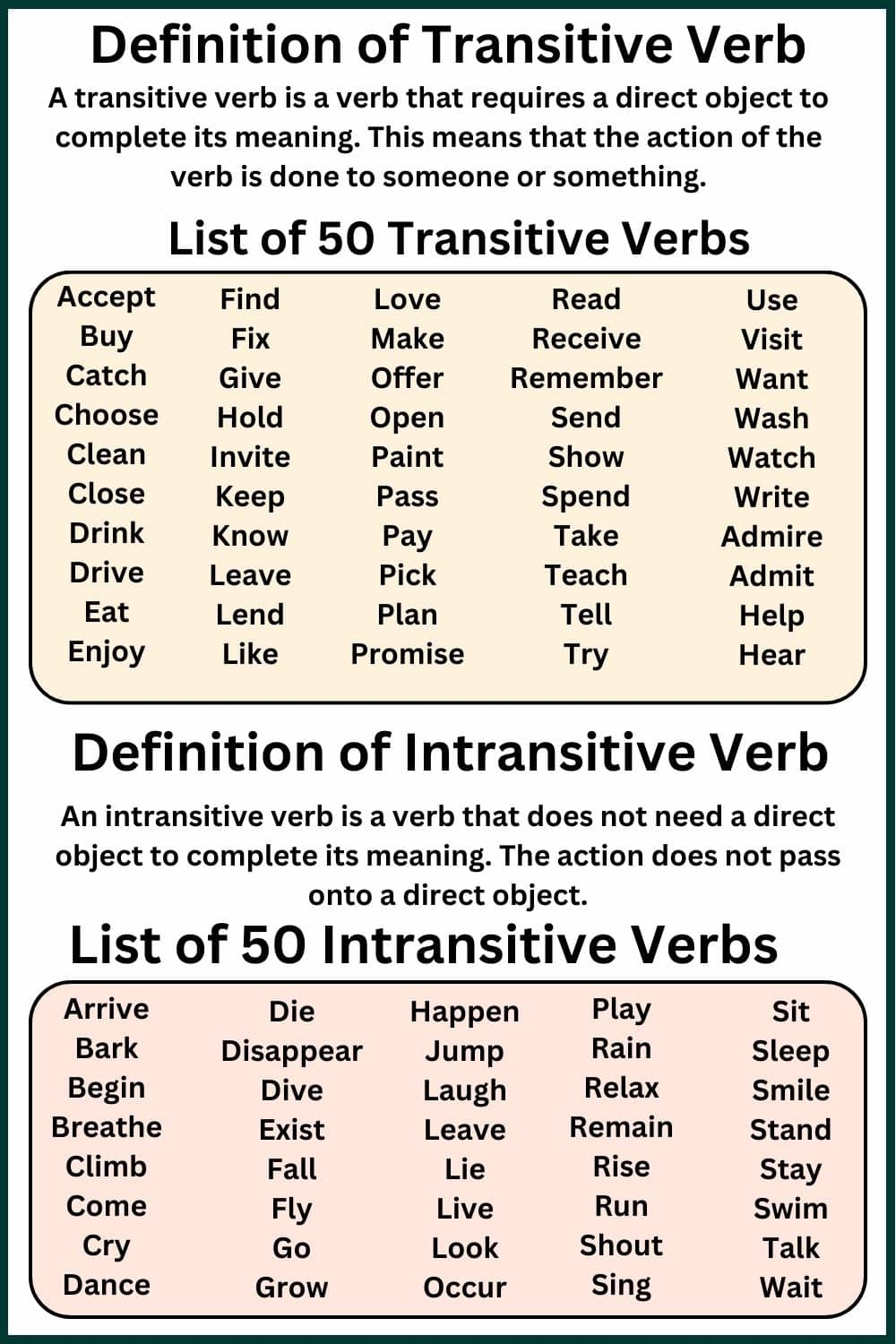Verbs are the backbone of any sentence, conveying the action or state of being. In English, verbs can be classified as intransitive or transitive, depending on the way they interact with their objects. Understanding the difference between these two types of verbs is crucial for constructing grammatically correct sentences.
Intransitive verbs are those that do not require a direct object to complete their meaning. They typically express an action that does not transfer to a receiver. On the other hand, transitive verbs are followed by a direct object, which receives the action of the verb. Let’s explore some examples of intransitive and transitive verbs to see how they differ in usage.
Examples of Intransitive vs Transitive Verbs
1. Intransitive Verb Example: “She sleeps.”
In this sentence, the verb “sleeps” does not require a direct object to complete its meaning. The action of sleeping is performed by the subject “she,” and there is no receiver of the action. Therefore, “sleeps” is an intransitive verb.
2. Transitive Verb Example: “He eats an apple.”
In this sentence, the verb “eats” is followed by the direct object “an apple,” which receives the action of eating. The verb “eats” transfers the action from the subject “he” to the object “an apple,” making it a transitive verb.
3. Intransitive Verb Example: “The sun rises in the east.”
In this sentence, the verb “rises” describes the action of the sun without requiring a direct object. The verb “rises” stands alone and does not transfer the action to any receiver, making it an intransitive verb.
4. Transitive Verb Example: “She reads a book.”
Here, the verb “reads” is followed by the direct object “a book,” which is the receiver of the action of reading. The verb “reads” requires an object to complete its meaning, distinguishing it as a transitive verb.
Understanding the distinction between intransitive and transitive verbs is essential for constructing clear and coherent sentences. By recognizing how verbs interact with their objects, writers can communicate their ideas effectively and avoid grammatical errors. Practice identifying intransitive and transitive verbs in sentences to enhance your understanding of English grammar.
